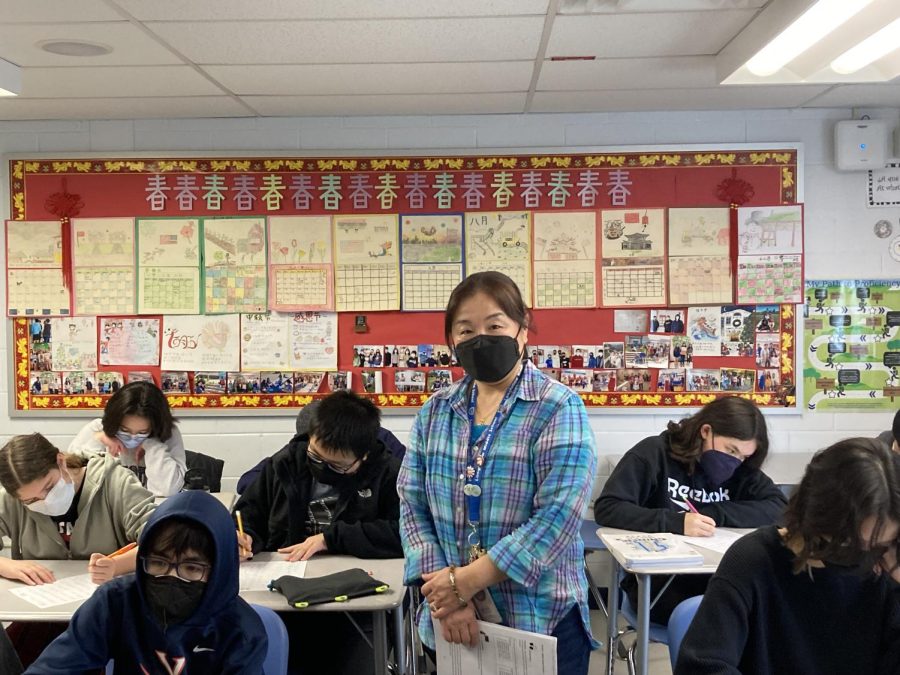Learning Chinese Can Open Many Doors
Photo by Claire Z. and Joyce G.
MS. Coyne teaches Chinese at Longfellow, an elective not available at all middle schools.
Only about five middle schools in the county offer Chinese as an elective, and Longfellow is one of them. Madeline Coyne, the Chinese teacher, has been teaching Chinese in FCPS for 13 years.
Ms. Coyne splits her time between Longfellow and Kilmer Middle, which increases the number of students who can take advantage of this language opportunity. In addition, she teaches at the Hope Chinese School in Chantilly and has taught Chinese Sunday School in America for 23 years.
“Ms. Coyne is very passionate about teaching Chinese, and she does a good job at it,” said Katherine M., a student taking the Chinese elective.
Katherine hopes to bring some of the Chinese culture she learns in class into her family and perhaps speak Chinese to her mother, who is a native speaker.
Zihan Z., another student in Ms. Coyne’s class, decided to take Chinese because he wanted to continue his family heritage and thinks the language will be a very useful skill.
‘I hope to eventually go back to China to do some business and also to just have fun there,’ said Zihan.
“[In] today’s world, speaking two languages is a definite advantage for any person. In today’s school[s], there are more students from foreign countries than ever before,” said Ms. Coyne, “It is important to learn multiple languages, and [it is] beneficial for their future.”
For Coyne, one of the best things about teaching her class is getting to see her students learning a new language and speaking it to each other. She believes that speaking Chinese is good for business and for making connections.
“Traveling around the world is always more enriching when you make friends with local people,” she explained.
The biggest challenge Ms. Coyne’s students encounter is memorizing all of the characters they learn. There are about 100,000 Chinese characters, but a literate person only needs to learn 3,000 to 6,000 characters. Unlike the English alphabet, where each letter has a pronunciation but no meaning by itself, each separate Chinese character has a meaning and a set pronunciation.
Ms. Coyne is passionate about what she does. “If you can speak Mandarin,” she said, “the world is your oyster.” She hopes to give her students the confidence to speak with people across Southeast Asia.







